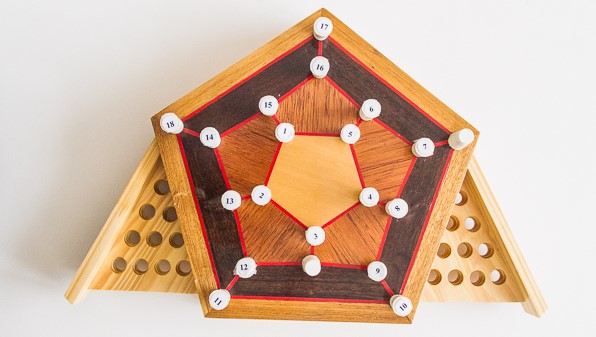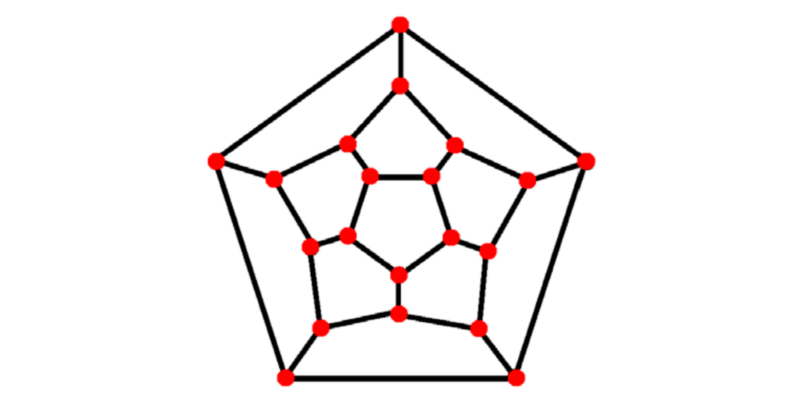ICOSIAN
The “Icosian” game was invented in the 19th century by Sir John Hamilton, a famous Irish mathematician. Note that the board is the flattening of the edges and vertices of a regular dodecahedron (a polyhedron with twelve faces, all pentagonal).
On this board, we can propose several challenges, ranging from easy to impossible!
One of the first challenges is finding a path passing through each point exactly once. This type of path in graphs became known as a Hamiltonian path. The path is called a circuit if it returns to the starting point. On Eulerian paths (see Königsberg Bridges), one passes exactly once on each edge.

Image: Alisson Ricardo.

